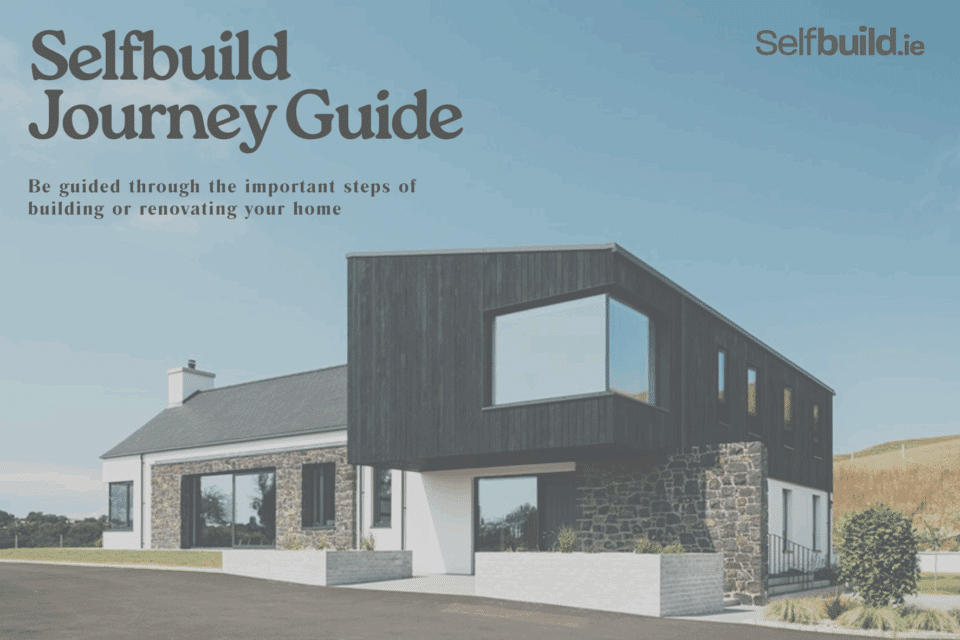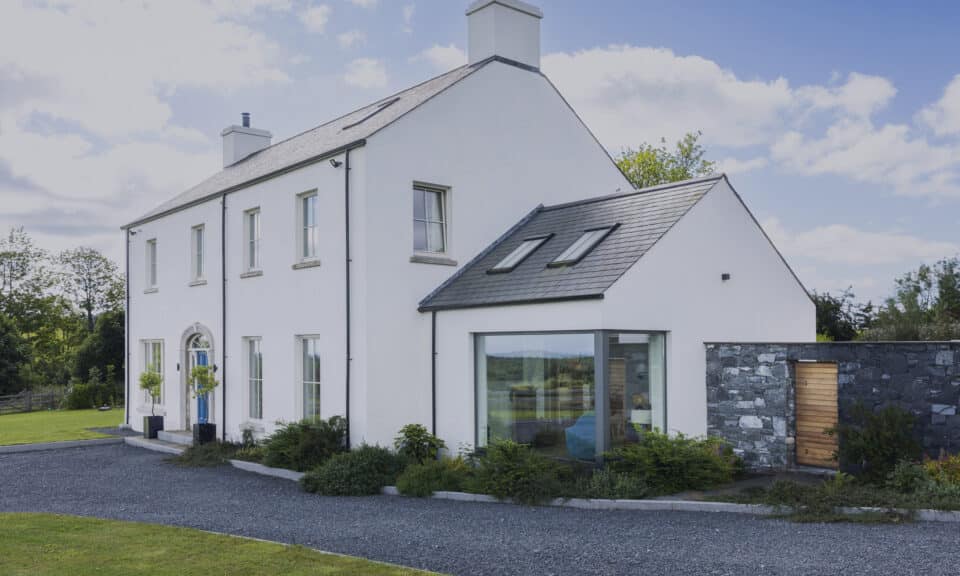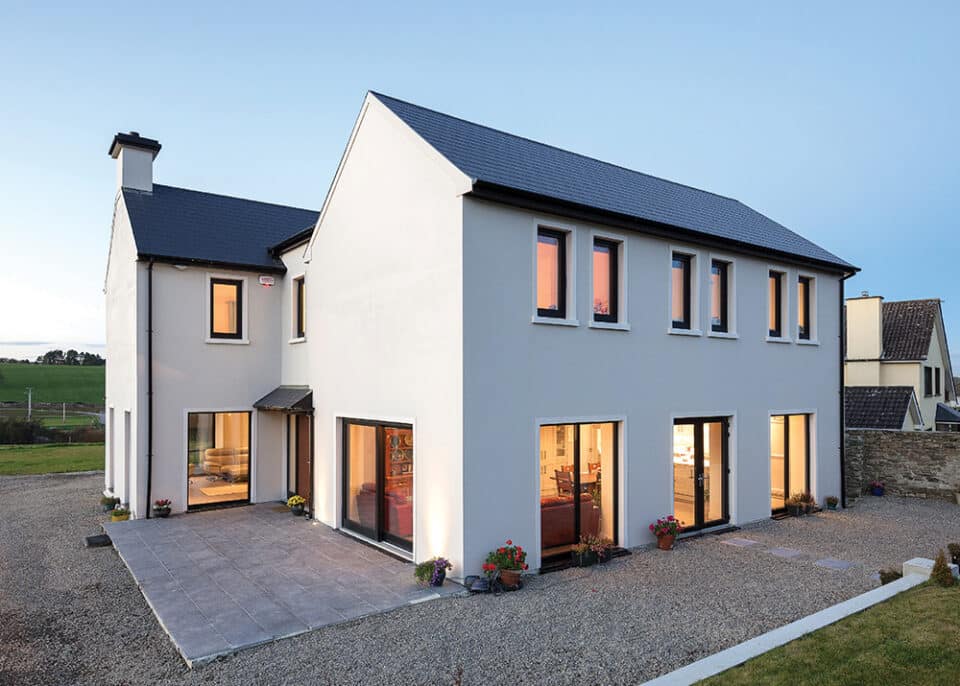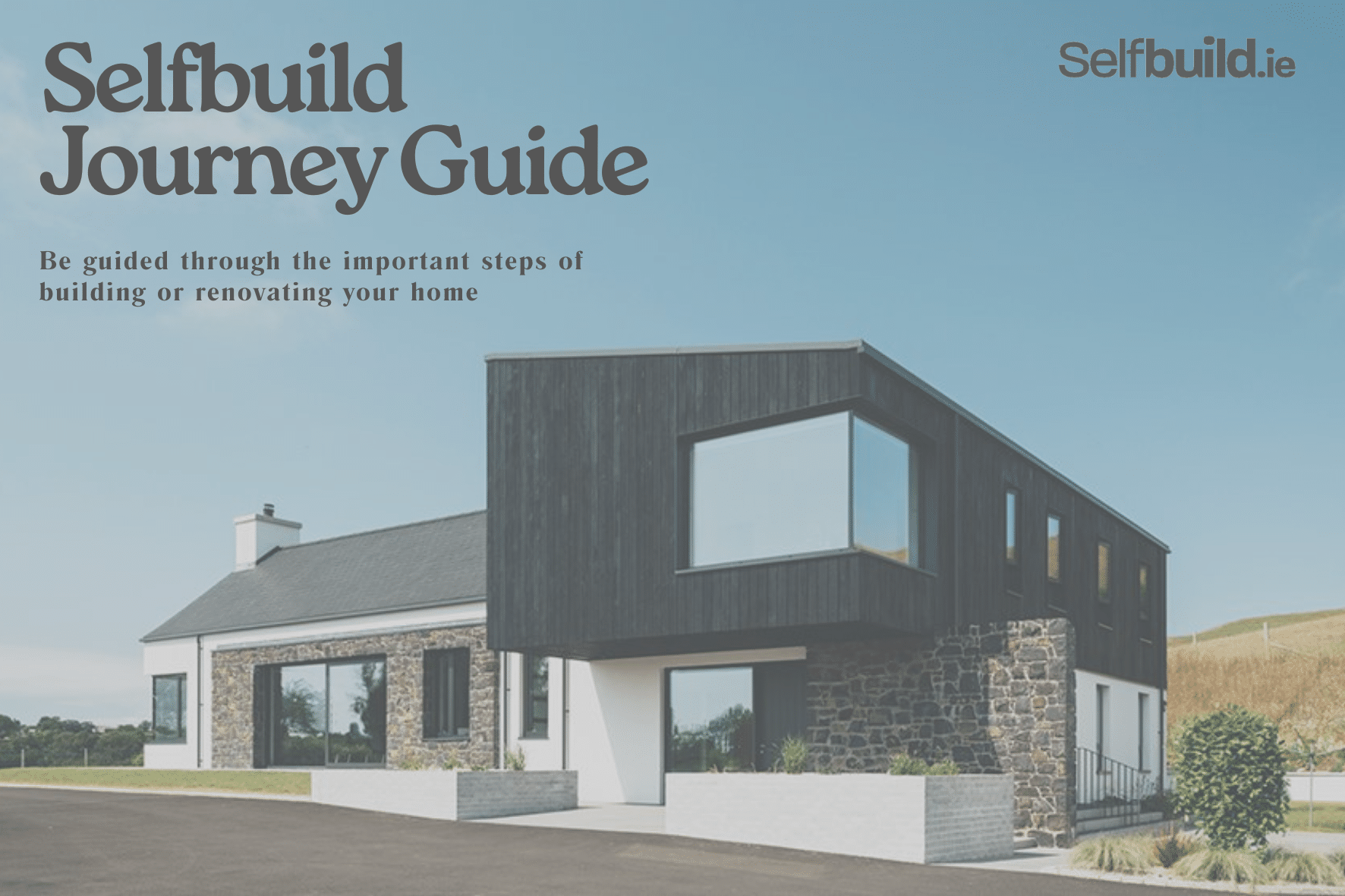In this article, we cover:
- What the Building Control regulations expect of you when you are building or extending
- The need for building regulations compliance
- Who needs to sign off on what
- What your responsibilities are as the owner
- How the system in ROI differs to the one in NI
- The difference between opting in and opting out of appointing an Assigned Certifier
- How to file a commencement notice
- What you need to include in your commencement notice if you opt in or out
- What documents to keep and which ones to upload on the Building Control Management System
- The need for DEAP calculations and how to get them
If you’re building a new house or adding an extension that’s above 40sqm in ROI, you will need to comply with the Building Control Regulations and its amendments (among other requirements!). The purpose of building control is to ensure the current, statutory building standards are abided by.
There are two ways to do this: by ‘opting in’ or ‘opting out’.
Whichever route you choose, it’s important to note that the ROI building control system remains self-certified. This means that compliance with the building regulations is not routinely checked by the authorities.
While your local authority may inspect the works and demand that documents be produced to prove that the building has been built to the required standards, and ensure that elements they have inspected are rectified to be brought up to standard, they are in no way in a position to vet or sign off on the build or indeed on any of its stages.
There is no signing off by the authorities at completion either. Compliance checks are instead done by individuals (the owner/self-builder or an assigned certifier).
This is the big difference with the NI system, whereby Building Control departments come to inspect every construction project at various stages to make sure the work is being carried out correctly. They are partners in your project and may even help you find ways to comply with the regulations on particular sticking points.
In ROI the opt-in option puts all of the inspection and paperwork requirements in the hands of the assigned certifier (and to a lesser extent on the assigned designer and builder). In this case a Certificate of Compliance on Completion must be signed by the owner and the Assigned Certifier.
The opt-out option, meanwhile, puts you in the same position as you were before the building control regulations were amended in 2014 (SI9 which introduced assigned designers and certifiers) and 2015 (SI365 which introduced the opt-out option for self-builders).
If you opt out of the certification scheme, in terms of the legislation the only difference with that pre-2014 situation is that you have to file documentation in an official database.
Do I have to file online? What does it involve?
Yes, on the Building Control Management System (BCMS) as there is no paper alternative. In order to get a commencement notice issued by the authorities, you must register your project on the BCMS.
Most of the questions within BCMS have drop down menus/boxes for things like whether you intend to build a garage, what the construction type is (timber frame, block, etc.), the number of stories, etc.
You are then asked to ‘nominate roles’ so you must let them know who the designer and builder will be – you can nominate yourself to both of these roles. The designer you appoint doesn’t have to be registered, e.g. does not need to be an accredited architect or engineer.
You must print and sign documentation to do so and upload them in pdf format. You must then print, sign and upload the commencement notice request, the notice of assignment (builder – this can be yourself), and your declaration of intent to opt out.
Things get tricky on the last part when you are asked to submit your supporting documents. This is done just before you pay your €30 fee per building (a large detached garage is considered a building but, depending on its height, if it’s single storey and under 25sqm it’ll be exempt from the building regulations and building control regulations).
It is your responsibility to submit documentation that is valid. Building Control will not check the quality of the information you provide to award a commencement notice….
If I opt out what documents do I need to file to comply with the Building Control Regulations?
In addition to the requirement to appoint people to various tasks, as per the statute, when filing your commencement notice you must supply:
“[S]uch plans, calculations, specifications and particulars as are necessary to outline how the proposed works or building will comply with the requirements of the Second Schedule to the Building Regulations relevant to the works or building concerned, and including: (I) general arrangement drawings including plans, sections and elevations, (II) a schedule of such plans, calculations, specifications and particulars as are currently designed or as are to be prepared at a later date, (III) the completion of an online assessment, via the Building Control Management System, of the proposed approach to compliance with the requirements of the Second Schedule to the Building Regulations […]”
The first requirement is clear enough, you must have construction plans, sections and elevations of your building project.
The second and third points require that you include additional documents to support your claim that you are constructing your home to the building regulations’ Technical Guidance Documents (TGD).
There are 13 TGDs, from A to M and they relate to every building element, from structural (Part A) requirements to ventilation (Part F), energy efficiency (Part L) and accessibility (Part M). Note that that for dwellings, fire safety certs are not required.
What are these additional documents for the opt out route? Is this a grey area I can overlook?
In order to get a commencement notice issued to you, you must tick all of the boxes, that is, you must submit documentation for each of the fields listed on the BCMS, including the requirement to provide supporting evidence that you will be complying to the TGDs.
It is your responsibility to submit documentation that is valid. Building Control will not check the quality of the information you provide to award a commencement notice, Building Control will simply check that the documents have been duly submitted.
In other words, it is not because a commencement notice has been issued that the documents attached to it are of sufficient quality to prove compliance to the building regulations. This is what a self-certified system means.
Most people agree the legislation is unclear on what supporting documentation you should submit exactly.
Speaking with Building Control officers, a good rule of thumb is for you to upload your DEAP calculations (see opposite page), and ensure all of your plans, sections and elevations are consistent with one another (make sure the versions match) and that they are detailed (make sure they’re construction drawings, not those you submitted to obtain planning permission – these are not comprehensive).
The construction drawings need to be so detailed that a builder should be able to construct the house without having to ask any questions/ seek any clarification. A tall order but it’s what you should aim for.
So while there is no need to submit detailed structural calculations, you should submit plans that explain how you intend to build the house including how to deal with the tricky junctions, e.g. what will the build-up be between the wall and roof?
Every building element much be accounted for so whether you submit extra information or put it all on the drawings, it’s up to you.
For instance, the foundations’ specification is often marked on the construction drawings as ‘to be built to the engineer’s specification’. Every single engineer’s specification should therefore be submitted as additional documentation.
The construction drawings need to be so detailed that a builder should be able to construct the house without having to ask any questions/seek any clarification. A tall order but it’s what you should aim for.
Do I need to pay for a professional to sign off on the documents I submit?
No, your plans and specifications don’t need to be signed off on in an opt out scenario.
However, unless you are in the construction business yourself you will need the help of a qualified professional to put together your (very) detailed construction drawings, you may also need another to do your DEAP calculations to comply with Part L and do up your BER, and perhaps specialist companies to put together some of the trickier specifications, e.g. your foundations or flat roof detailing.
It’s all about due diligence: make sure every building element is given clear guidelines on how it is to be constructed.
Why do I need such a high level of detail, shouldn’t my builder know what to do?
Some builders are still used to building to previous versions of the building regulations and some practices are no longer acceptable; the TGDs are regularly updated and not every builder keeps up to speed with the changes.
Arguably the TGD with the greatest impact is the one relating to energy use; for instance before the amendment to Part L, 100mm cavity walls were standard but now we are building them twice as thick to allow for additional insulation.
On a structural level this has the effect of requiring more wall ties than would have been the case before. Small details like this are crucial to get right.
What is the point of gathering these mounds of paperwork?
In a sense it forces you to plan your project well in advance; the key to a successful build, after all, is to have everything detailed to the greatest extent possible before you get on site. This is just a means of documenting all the hard work you put in!
And then, if things were to go wrong the documents will provide you with the information you need to see who is responsible.
If a wall falls down and, upon investigation, it’s clear the specification was wrong or information on the drawings was missing, whose fault was it? A judge will look at what documents were filed to determine liability.
If you didn’t file any documents relating to the wall structure it’s hard to point the finger at anyone but yourself. On the other hand if you did get specifications drawn up by an engineer or a company specialised in this type of work, that could be a different matter.
Of course litigation lawyers will tell you that it is very difficult to be able to clearly assign blame in construction cases, even when there are specifications attached, which can make it very expensive and oftentimes impossible for homeowners to find a recourse were things to go wrong.
The DEAP end
When it comes to energy use, the building regulations have come a long way.
In order to prove compliance to Technical Guidance Document Part L, you must get your Dwelling Energy Assessment Procedure (DEAP) calculations done. Remember to get this done BEFORE you start building in order to specify the correct amount of insulation, the right heating/hot water balance, and your level of airtightness. It will be expensive to retrofit the building to comply to Part L after the fact so this really has to be done from the get-go.
Also crucial to bear in mind is that before you move into your new house you must submit your Building Energy Rating (BER – it’s automatically generated on the basis of the DEAP calculations) to the authorities. The BER can only be done by an SEAI (Sustainable Energy Authority of Ireland) vetted professional; see www.seai.ie/Your_Building/BER/

…the key to a successful build, after all, is to have everything detailed to the greatest extent possible before you get on site. This is just a means of documenting all the hard work you put in!
Essential reading: The Department of Housing’s Code of Practice.
Disclaimer: This guide is for reference only, consult a building professional to advise you on your specific project.
Article originally published in the Winter 2016 edition of Selfbuild magazine.
For an overview of ‘opting in’ of the statutory process, Winkens Architecture has published a guide.






















